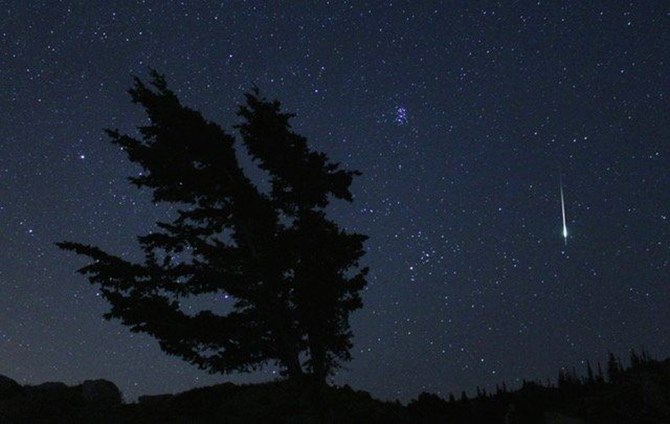
The Geminid meteor shower begins this week.
Image Credit: SUBMITTED / NASA Facebook
December 03, 2019 - 2:05 PM
This week’s night sky viewing provides a good opportunity to catch the latest meteor shower and the last chance to catch Jupiter shining brightly in the night sky before it disappears from view.
There will be lots of late-day darkness as well, as the sun sets at its earliest time this winter in spite of the fact the winter solstice is still two weeks away.
The Geminid meteor shower, which begins this week, doesn’t peak until Dec. 14, but with a quarter moon in the sky, viewing might be better than on the peak night when the display shares the night sky with a full moon.
Tomorrow night, Dec. 3, might provide the best viewing opportunity with a forecast calling for cloudy periods.
The best time to watch the Geminids this week is around 12:30 a.m. on Thursday, Dec. 5, and about an hour later each day afterwards, before twilight.
According to Astronomy.com, this week will provide the last opportunity to get a good view of Jupiter before it is blocked by the sun’s glare.
It should be visible just above the southwest horizon around a half-hour after sunset and will be one of the most brightly lit objects in the sky, with only the Moon and Venus appearing brighter.
The planet will sink lower on the horizon with each day and will disappear by next week prior to a solar conjunction on Dec. 27.
The shortest afternoon of the year is coming up fast for those living in the northern latitudes.
The sun will set earlier on Dec. 8 than any other day of the year for those living at 40 degrees north latitude.
By Dec. 21, the sun will set three to four minutes later than Dec. 8, according to timeanddate.com.
The further north one goes, the closer the latest sunset occurs to Dec. 21. Timeanddate.com says it’s because of a discrepancy between modern-day timekeeping methods and how time is measured using the sun, known as “the equation of time.”
The equation of time is the difference between time measured using a sundial and time measured using a clock.
Clocks run on the premise of a 24 hour day, but the reality is an earth day is actually longer than 24 hours around the summer and winter solstice, due to the earth’s elliptical orbit around the sun.
As a result, solar noons don’t occur at the same time as noon on a clock, with solar noons occurring a few minutes later than the previous day around the solstices.
The dates for the earliest and latest sunset are also dependent on latitude, with sunsets occurring later the further north you go.
For Vancouver and the 49th parallel, the shortest afternoons of this year will be Dec. 9 through Dec. 13, when the sun sets at 4:13 p.m.
To contact a reporter for this story, email Steve Arstad or call 250-488-3065 or email the editor. You can also submit photos, videos or news tips to tips@infonews.ca and be entered to win a monthly prize draw.
We welcome your comments and opinions on our stories but play nice. We won't censor or delete comments unless they contain off-topic statements or links, unnecessary vulgarity, false facts, spam or obviously fake profiles. If you have any concerns about what you see in comments, email the editor in the link above.
News from © iNFOnews, 2019